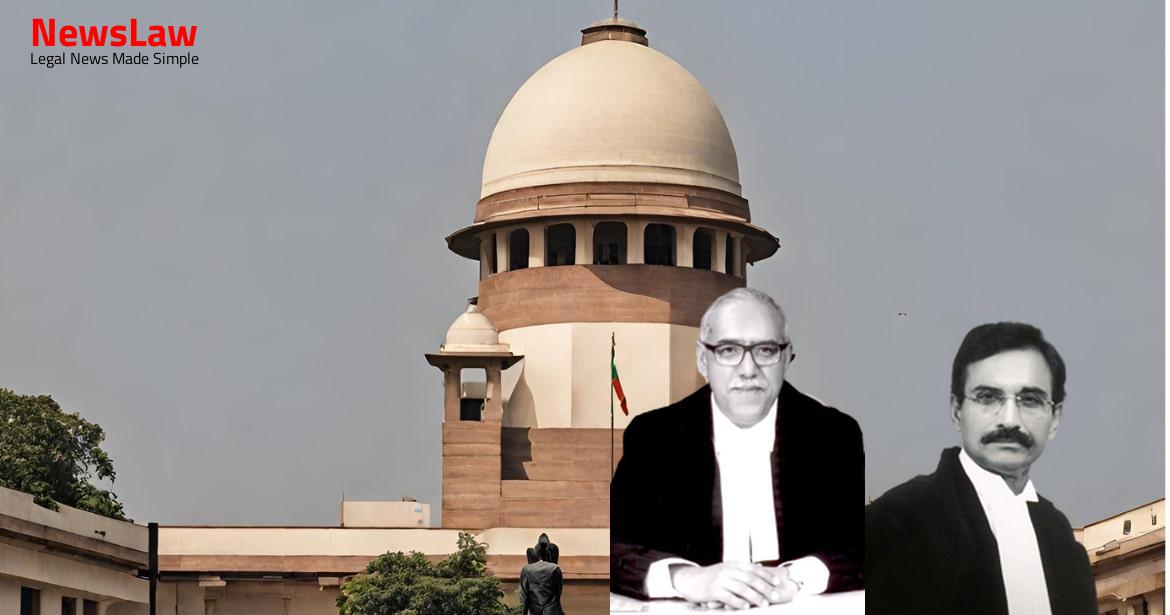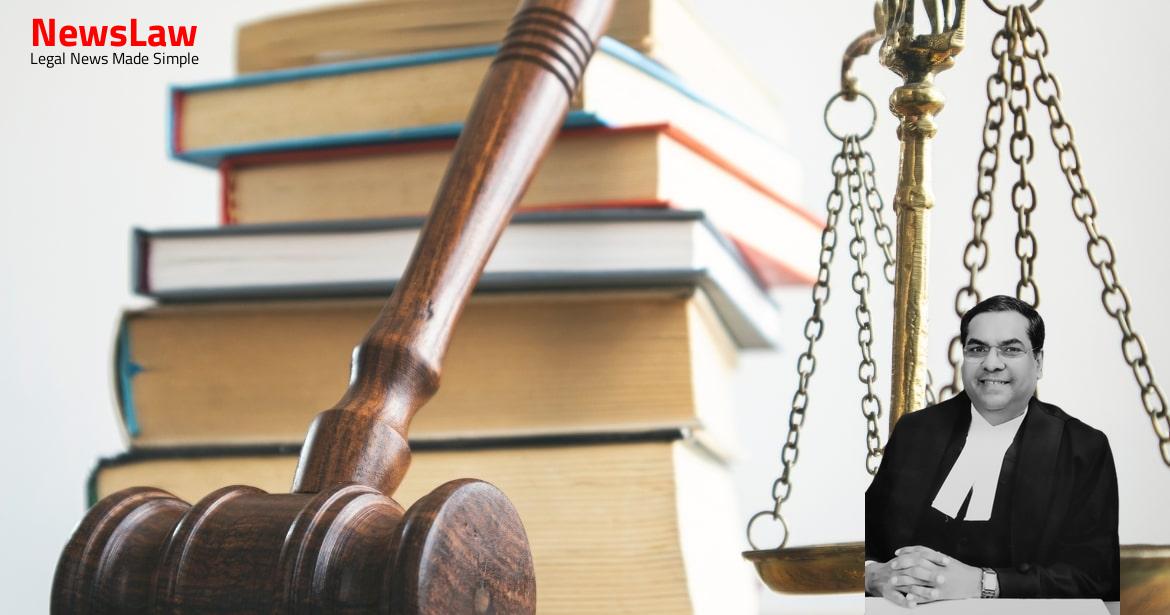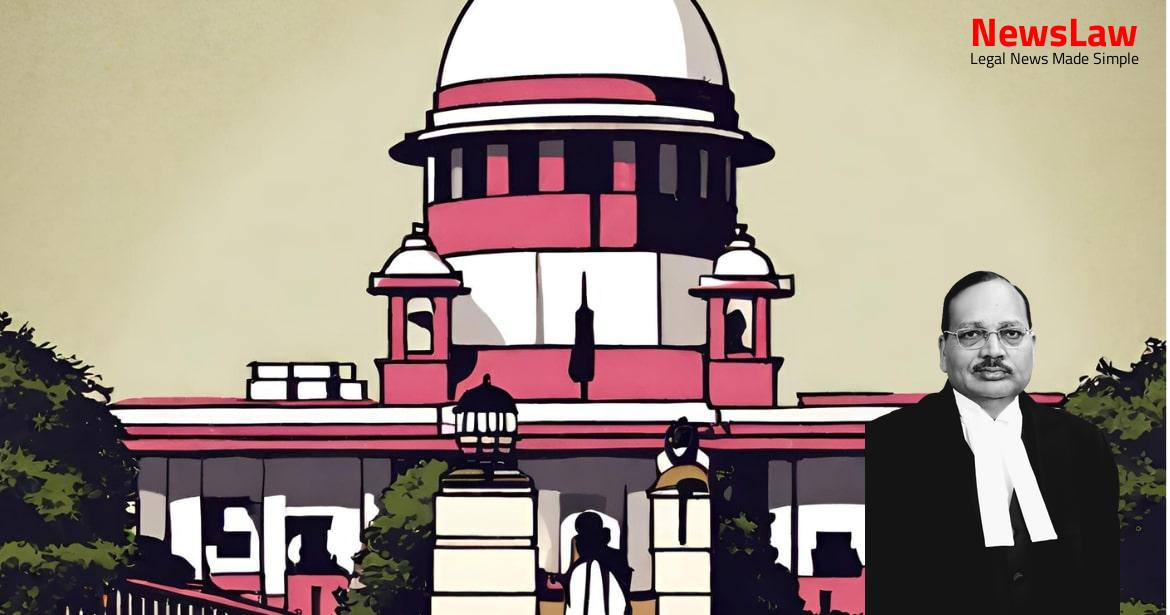The recent court case delved into the intricate legal analysis of classifying power lines within the electricity sector. The focus was on determining whether certain lines belonged to the transmission or distribution network, based on the Electricity Act and established regulations. This summary will provide insights into the court’s decision regarding the classification of 2×110 kV lines, offering valuable perspectives on this pivotal issue.
Facts
- HPCL requested additional power supply from TPC on a redundancy basis.
- TPC assets were trifurcated into generation, transmission, and distribution entities in 2006 for accounting and tariff purposes.
- The Commission disallowed TPC Transmission’s modification application for its License No 1 of 2014.
- The Appellate Tribunal overturned the Commission’s decision and remanded for reconsideration.
- HPCL augmented its oil refining facility in 2005 by installing additional units.
- A dispute arose regarding whether HPCL should pay wheeling charges to TPC-D as a distribution licensee.
- The Tribunal considered the 2×110 kV HPCL feeder as part of TPC-D’s distribution network.
- The Tribunal stated that HPCL cannot receive direct power supply from TPC-T.
- TPC-D was directed to refund wheeling charges collected from HPCL.
- The Tribunal held that the EHV feeders from Trombay generating station are transmission lines.
- The Tribunal framed two key issues for consideration regarding HPCL feeders and wheeling charges.
- The Tribunal referenced past judgments to support its decision on HPCL feeders and distribution networks.
- TPC-T filed an application for amendment of the transmission licence in 2016.
- TPC applied for transmission and distribution licences in 2014.
- Representation was made by TPC in 2014 classifying lines as transmission or distribution.
- Transmission Licence No 1 of 2014 was granted to TPC-T in 2014.
- HPCL applied for short term open access from TPC-D in 2015.
- HPCL executed a power purchase agreement with SWPGL in 2016.
- TPC-T claimed that including the 2×110 kV lines in its network was an error.
- HPCL filed a petition in 2017 against TPC-D for wheeling charges on Trombay – HPCL lines.
Also Read: Judicial Review of Answer Key in Teacher Selection Process
Issue
- The main consideration in these Appeals is whether…
Also Read: Jurisdiction and Substantial Questions of Law in Land Dispute Case
Arguments
- HPCL submitted that the judgment of the Tribunal in OPTCL is erroneous.
- Inclusion of 2×110 kV lines in the transmission assets by TPC-D is a factor that cannot be ignored while deciding the entitlement of TPC-D to impose wheeling charges by treating the 2×110 kV lines as part of the distribution system.
- Undisputedly, 2×110 kV Trombay – HPCL lines have been declared to be part of transmission assets by TPC-T.
- SWPGL argued that there is no prohibition in the Electricity Act preventing a consumer from being directly connected to the network of a transmission licensee.
- According to SWPGL, the capital investment plans of the distribution network include only 11 kV and 33 kV voltage level lines.
- The plea of inadvertence taken by TPC-D has to be rejected in view of the availability of abundant material.
- SWPGL referred to the roll-out plan of the distribution network made by TPC which deals only with lines up to 33 kV.
- TPC-D raised a preliminary objection relating to the maintainability of the appeal filed by SWPGL on the ground that it lacks locus standi.
- It was argued on behalf of HPCL that a consumer can be connected directly to a transmission network.
- It was contended on behalf of HPCL that the 110 kV HPCL line is a transmission line.
- Trifurcation occurred in 2005 leading to separate determination of tariff for transmission and distribution.
- HPCL has been paying wheeling charges until 2018, with a pending application for amendment of the transmission license.
- Submission made by SWPGL’s counsel arguing against the order of the APTEL.
- HPCL has been receiving electricity from TPC-D’s distribution network since 1955.
- Detailed submission on the network roll-out plan emphasizing connections at various voltage levels.
- No transmission charges were demanded or recovered for 110 kV assets.
- Reliance placed on a tariff order allowing capitalization of 2×110 kV distribution lines.
- Argument that 110 kV lines were mistakenly included in the transmission license in 2014.
- The network roll-out plan focused on developing network backbone below 33 kV levels.
Also Read: Challenge of Secured Creditor’s Procedure
Analysis
- The Tribunal erred in ignoring the existing transmission license of TPC-T before concluding that 2×110 kV lines are part of the distribution network
- TPC-T has filed an application for amending its transmission license pending before the Commission
- The Commission’s basis for allowing HPCL’s petition relied on the transmission license granted to TPC-T in 2014
- The Tribunal should have addressed any appeal against the Commission’s decision on the license amendment before considering TPC-T’s appeal against the Commission’s order
- The demarcation between transmission and distribution boundaries is based on voltage as per Regulations
- The Tribunal should have noted TPC-T’s application for amendment of its transmission license which included the 2×110 kV lines in the transmission network
- The Tribunal’s failure to consider TPC-T’s application for amendment of the transmission license was a mistake
- The Tribunal should have directed the Commission to adjudicate TPC-T’s application for amendment of the transmission license
- The Tribunal erred in ignoring the Regulations while considering 2×110 kV lines as part of the distribution system.
- The judgment of the Tribunal needs to be set aside and the matter remanded for fresh consideration.
- No opinion is expressed on the Tribunal’s findings regarding the interpretation of the Electricity Act, 2003.
- The transmission license issued to TPC-T includes 2×110 kV lines as part of the transmission system.
- TPC-T cannot argue that 2×110 kV line is part of the distribution system of TPC-D unless the transmission license is modified.
Decision
- TPC-T’s application for amendment of its transmission license needs to be decided before considering TPC-D’s request for inclusion of 2×110 kV lines.
- Commission is directed to decide TPC-T’s application within 2 months of lockdown lift, appeals to be decided within 3 months of filing.
- The Tribunal’s judgment is set aside, and Appeal No.84 of 2018 is remitted for fresh adjudication.
- If TPC-T’s amendment application is approved, the 2×110 kV lines won’t be part of the transmission network.
Case Title: SAI WARDHA POWER GENERATION LIMITED Vs. THE TATA POWER COMPANY LIMITED DISTRIBUTION (2020 INSC 329)
Case Number: C.A. No.-002228 / 2020



